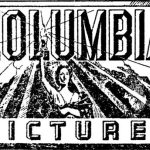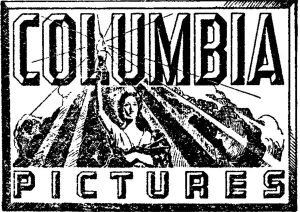


 The 1936-37 season found Columbia riding high with screwball comedies, and a psychological drama – Frank Capra’s “Lost Horizon”. The two-reel comedies continued to prosper. Then Columbia began making cliff-hanging serials, although the earliest ones were not in the usual Columbia house style known from later years. And the cartoons were showing the best artwork they had done to date. Joe De Nat’s musical scores were progressing nicely. And a new face showed up on the animation front, as the studio gave new work to the Ub Iwerjs studio. Iwerks remained quite the technician, improving his product to full Technicolor for the Color Rhapsodies, even if such episodes were a little weak on the gags.
The 1936-37 season found Columbia riding high with screwball comedies, and a psychological drama – Frank Capra’s “Lost Horizon”. The two-reel comedies continued to prosper. Then Columbia began making cliff-hanging serials, although the earliest ones were not in the usual Columbia house style known from later years. And the cartoons were showing the best artwork they had done to date. Joe De Nat’s musical scores were progressing nicely. And a new face showed up on the animation front, as the studio gave new work to the Ub Iwerjs studio. Iwerks remained quite the technician, improving his product to full Technicolor for the Color Rhapsodies, even if such episodes were a little weak on the gags.
Two Lazy Crows (11/26/36) was Iwerks’ debut for the studio. Two crows (parodies if Laurel and Hardy), in late fall, are discussing the fact that they don’t want to fly South – too strenuous. Thet see a squirrel busy cracking and storing nuts for the winter. At that sight, they also scoff at the thought of expending all that energy to survive a long, cold winter. They see a large-billed pelican offering transport for birds too ill to make the migration. In the only cartoon to ever incorporate a stock Laurel and Hardy verbal routine, the Laurel crow gets the wise idea to pretend that they’re sick, but when the Hardy crow asks him to repeat the idea again, Laurel can’t think with wisdom twice, and the effort to repeat the remark emerges as pure nonsense. The two birds show up at the departure gate on crutches, and actually pass examination by a doc stork. However, the Laurel crow enthusiastically casts away his crutches and runs for the pelican – leaving the Hardy crow under the embarrassing fish-eye of the doctor, who now smells a fraud. A whistle from the Doc sends some patrol birds in criss-cross attack of the fakers, while the flight takes off without them. The two are caught by winter’s onset (Iwerks not being able to resist reuse of a gag from “Jack Frost”, where even the boys won’t stoop so low as to move in on the abode of a skunk), and end up back at the home of the squirrel. They beg not to be thrown out, and the squirrel (despite a nagging wife) takes a chance that they’ve reformed, putting them to work cracking his nuts. The squirrel, having no work to do of his own, falls asleep in an easy chair. The minute he is asleep, the crows also quit to fall asleep in chairs of their own. Enter the Missus – who places all three chairs and their occupants outside in the snow, then slams the front door, bringing down a snowdrift atop all three characters for the iris out. Two original songs: “We’re Two Lazy Crows”, and “Going South”, likely both written by Joe De Nat.
A Boy And His Dog (12/23/36) – Sparky, a cherubic blonde child, is teasing his dog Yippee (lifted in essence from the model of In My Gondola). A mess is being made, and mother comes to send Sparky to bed, and give him an admonition about teasing the pip, reminding him that someday, the dog will be bigger than he is. Sparky thinks this nonsense, but a storm comes up as he dreams – and Sparky’s dream world is invaded by a ten foot tall giant puppy – the grown Yippee, who talks in the basso tones of Billy Bletcher, and proceeds to tease Sparky in all the manners in which Sparky had previously teased – and then some. The youth eventually awakens before the dream Yippee can completely give him the works, and remembers mom’s advice, treating Yippee nice by the golden rule. Song: “Little Man, You’ve Had a Busy Day”, a 1934 pop song that was big here, in Great Britain, and in France. American recordings include Rudy Vallee on Victor, Emil Coleman on Columbia, and Frank Luther nominally directing an orchestra (actually the Green Brothers Novelty Band) on Melotone, Perfect, et al. British versions include vocal record by Elsie Carlisle on Dacca, and Paul Robeson on HMV. Dance versions from England came out by Ambrose on British Brunswick, and Billy Cotton on Regal Zonophone. In France, for dancing there was Le Jazz Patrick on Pathe, and a vocal with French text titled “Petite Homme, C’est L’Heure de Faire Dodo” by Le Petite Mirsha on HMV, a recording desirable because of the presence of a young Django Reinhardt. There were later recordings done by Bing Crosby on Decca, Perry Como in an album cut on “Saturday Night With Mr. C” on RCA, and one by Patty and Jerry Lewis on Capitol.
Gifts From The Air (1/1/37) – Columbia’s Christmas cartoon for the 1936-37 season (released a tad late), goes through the trope of putting on a Christmas feast for a poor waif dressed in rags, but maneuvers itself in signature Mintz fashion into a host of radio and celebrity caricatures doing the presenting, whom Santa delivers straight out of the radio loudspeaker. Joe Penner, Paul Whiteman, Kate Smith, Ben Bernie, Ed Wynn, Eddie Cantor and Parkyacarcus, and Bing Crosby (as a wind-up goat, predicting the “Baa Baa” of his later hit, “The Whiffenpoof Song”, Has another excellent color palette. Song: “Christmas Time, Christmas Time”, a De Nat original with all the usual provisos.
The Lyin’ Hunter (2/12/37) – Krazy Kat is taking his niece through the zoo, and recounts his exploits as a lion hunter. He seems to follow Frank Buck’s advice – to Bring ‘em back alive. Krazy of course turns out not to be as brave and daring as he lets on – this is a surprise? A Kong-like gorilla terrorizes the jungle and all around him, and Krazy finally shows his temerity. As we return to the present, one snarl from the caged animals sends Krazy running to the topmost point of the head of a giraffe. Song: “Animal Crackers In My Soup”, introduced by Shirley Temple in the film “Curly Top”. A soundtrack version circulated on record all through the LP era, though her version was never released as a 78. Don Bestor (Jack Benny’s bandmaster before Phil Harris) recorded the Brunswick version. Smith Ballew got the dime store version for Perfect et al. A vocal version also appeared on Melotone et al by Durello Alexander, a singer from the Paul Whiteman and Archie Bleyer orchestras. Mae Questel, who was developing a secondary niche covering Shirley Temple numbers, did her own vocal cersion for Decca. Henry Hall and the BBC Dance Orchestra performed it across the pond for British Columbia, having great fun with animal noises, custom lyrics, and sound effects. The song eventually made the kiddie labels, with a version on Little Golden records, alongside several other Shirley Temple songs revived.
Merry Mannequins (3/19/37) – Midnight in a department store – and a couple of mannequins (Mary Mannequin and Dan Dummy) are rhapsodizing about their expected life together, seeing a future of sunshine and rainbows. Backgrounds and styling are impressively in ‘30’s art-deco style. Activity shifts to the furniture floor, where their wedding is to take place. The wedding goes on without a hitch (except for the couple), then everything has to revert to normal mode for the sales day, with the couple in the window. A cupid laughs at the newlyweds, but gets booted out the plate glass window by the dummies as they assume their poses for the day. Not much in the way of gags, but strong in technical aspects, as you might expect from an Ub Iwerks production. Songs: “Getting Chummy (With a Dummy Like You)”, an original which does its best to match the mood of a Fred Astaire/Ginger Rogers number. Also, a parade piece, “We’re Ready To Go”, as the furniture department furnishes a model bungalow.
Let’s Go (4/10/37) – This cartoon actually comes off as something which could have been produced in 1933, though it would have been in black in white. It’s one of those cheer-up cartoons that declares that prosperity is just around the corner. In the bee town of Prosperity, business is humming – including turning tortoise shells into streamlined cars. The queen bee, however, encounters a wandering grasshopper from a nearby land, who tells in a sad song about the life of poverty and misery their world still knows. The queen orders a mercy mission, including converting the royal hive into a flying dirigible, and a squadron of bees flying in honey bombs dropped from fountain pens. Eventually, grasshopper land too knows prosperity, and the factories are humming and belching smoke as the bees depart. Songs: all originals, “The Prosperity March” at the beginning of the cartoon, explaining the bees’ prosperity, “The Gloomy Grasshopper Song”, and the title march as the bees perform their mercy mission.
Scrappy’s Band Concert (4/29/37) – Isn’t it interesting how many studios liked to have their lead characters conduct a municipal band? Scrappy is no exception. The film does not try to imitate Mickey Mouse – and no cyclones. Scrappy does have to shoo away Yippee, while Oopie is a seller of candy wandering through the crowd. Most of the songs are old familiar staples of the band repertoire, including “By Heck”, and the Liszt Second Hungarian Rhapsody. A march which sounds familiar in its opening bars (though possibly rolled together with a second march as it goes along) opens the credits and the cartoon. I am not sure if it is from Sousa’s repertoire or not, and I invite comments from anyone who can identify the piece – or pieces.
NEXT TIME: Further into 1937.